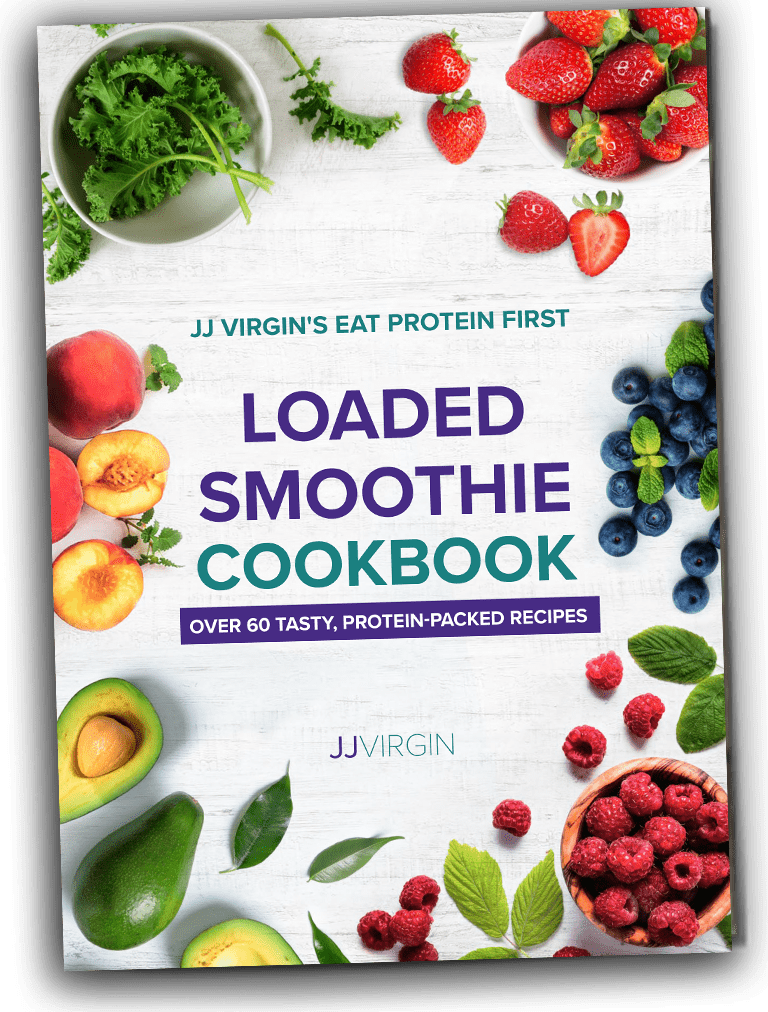Do you reach for snacks when you’re stressed, get cravings at the same time every day, or find it hard to pass up the pastries at your favorite coffee shop? It doesn’t all have to do with willpower. There are a few different types of hunger that lead to these eating habits, and understanding which one is at the root of your cravings can be a powerful tool for better managing your health and well-being.
The 4 Types of Hunger
1. Homeostatic Eating
Homeostatic or balanced eating refers to your body’s ability to maintain food intake and caloric balance. However, when hunger hormones like leptin and ghrelin fall out of sync, you can get hungrier than you should be.1 Blood-sugar imbalances and gut health play pivotal roles in this delicate equilibrium.2
Strategies to Manage Homeostatic Eating
Eating by the plate with a protein-first approach is the best way to balance your hunger-regulating hormones so you stay fuller longer, keeping nagging cravings away between meals.
- Protein gives you long-lasting energy and satiety and supports blood-sugar balance. Aim for 30 to 50 grams of protein at every meal.
- Fiber slows down stomach emptying, helping you feel fuller as well. Non-starchy vegetables and slow low carbs like lentils, wild rice, winter squashes, and potatoes are great fiber sources. Aim for at least 35 grams (and preferably, more like 50 grams) of fiber daily. (If you’re starting with very little fiber in your daily intake, gradually increase it by a few grams a day to avoid digestive upset.)
- Healthy fats, including avocados, nuts, seeds, and olive oil, are digested slowly, helping to keep blood-sugar levels stable and your hunger satisfied. Eating fat triggers the release of hormones that signal your brain that you’re full.
- Drink plenty of water throughout the day to manage hunger, too. One study found that a 12-ounce glass of water significantly increased fullness and reduced hunger, so participants ate less at lunch.3

2. Hormonal Eating
Have you ever noticed your appetite and food cravings shifting with your stress levels? With hormonal eating, imbalances in hormones and brain chemicals can influence your appetite and metabolism.
Chronic stress, which triggers your primary stress hormone cortisol, can increase your appetite.4 Stress can also impact brain chemicals, including levels of serotonin (your feel-good neurotransmitter) and dopamine (your reward neurotransmitters).5 Reduced serotonin levels may trigger carb cravings as a temporary mood boost. Low dopamine levels, on the other hand, can drive cravings for food rewards, often in the form of high-sugar-impact comfort foods.
How to Manage Hormonal Eating
Focus on stress-reduction techniques to manage hormonal eating and lower its impact. Consider meditation, deep-breathing exercises, yoga, or high-intensity interval training (HIIT) to help your body better cope with stress. Additionally, staying adequately hydrated can manage stress and minimize cravings.
A few nutrients also help manage stress and stress-related eating:
- Vitamin C: Your adrenal glands have one of the highest vitamin C concentrations of any organ.6 Chronic stress can deplete vitamin C levels.
- GABA: GABA is a neurotransmitter that helps you relax while reducing stress and anxiety.7 Supplementing with GABA can increase levels in your brain and provide calming effects. Take Ten Stress Support is a uniquely formulated product that provides GABA, glycine (an amino acid with calming benefits), and the B vitamins niacinamide, pantothenic acid, and vitamin B6.*
- B vitamins: Stress depletes B vitamins, too. A B-complex supplement can help manage stress levels.8 Look for one that combines therapeutic amounts of all eight B-complex vitamins, in highly absorbable pre-activated forms. B-complex vitamins help sustain a healthy metabolism, support energy production, help balance hormones, and manage stress levels.
The relationship between stress and gut health is a two-way street, where stress can negatively impact the gut. A healthy gut, on the other hand, helps manage and reduce stress. My 21-Day Breakthrough Food Intolerance Cleanse can help heal the damage that stress creates on your gut.
3. Habitual Eating
We all have routines and habits, some of which extend to eating patterns. Habitual eating occurs when you find yourself reaching for food at specific times of the day, regardless of whether you’re genuinely hungry.
When it comes to overeating, proximity matters. Placing food further away reduces the likelihood of eating it.9
How to Manage Habitual Eating
Identifying and managing habitual eating involves recognizing and reshaping unhealthy routines. These routines can be particularly prevalent in the morning and late at night when fatigue and stress make you more likely to reach for comfort foods.
Replace unhealthy habits with healthier ones. For example, if you regularly find yourself drawn to a coffee shop for a buttery croissant on your morning commute, consider ordering online or brewing your coffee at home to break the routine.
The easiest way to break nighttime eating is to enjoy a protein-first dinner and then close the kitchen for the evening, at least three hours before bedtime. If you crave a bedtime snack, have a glass of water instead. One study found that drinking 8 oz of water at bedtime can shut down your evening hunger pangs.10
4. Hedonic Eating
Do you ever eat purely for pleasure rather than out of physical hunger? Welcome to the realm of hedonic eating, where the desire for delicious food overrides your body’s natural hunger signals.11
Manufacturers have engineered processed foods (even healthy ones) to be very easy to overeat, signaling your brain’s reward signals and making you want more.12
How to Manage Hedonic Eating
Keep the enemy out of the kitchen (and wherever else you might hide it)! Mine is salted, crunchy almond butter. While a tablespoon can be healthy, overeating it (which is very easy to do) can quickly become unhealthy.
These ultra-processed foods also create a domino effect: you have a bite of something engineered to be incredibly delicious—and immediately want more. You can’t stop at one!
Constant cravings are one sign you’re dealing with a sugar addiction. The Sugar Impact Diet provides everything you need, step-by-step, to gradually and gently eliminate sugar (including sneaky sugars that sabotage your success).
Heal Your Metabolism to Reclaim Your Eating Habits
Whatever your type, healing your metabolism can help you better control eating habits, stabilize blood-sugar levels, balance hormones, and help you find your healthy weight. A healthy metabolism efficiently utilizes the calories you eat into energy. When your metabolism functions well, you’re less likely to experience energy crashes, fatigue, or the need to seek out quick energy fixes like high-sugar-impact foods.
References:
- Lutter M, Nestler EJ. Homeostatic and hedonic signals interact in the regulation of food intake. J Nutr. 2009 Mar;139(3):629-32. doi: 10.3945/jn.108.097618. Epub 2009 Jan 28. PMID: 19176746; PMCID: PMC2714382.
- Cleveland Clinic: Insulin Resistance
- Rolls BJ, Bell EA, Thorwart ML. Water incorporated into a food but not served with a food decreases energy intake in lean women. Am J Clin Nutr. 1999 Oct;70(4):448-55. doi: 10.1093/ajcn/70.4.448. PMID: 10500012.
- Cleveland Clinic: Cortisol: What It Is, Function, Symptoms & Levels
- Natarajan R, Northrop NA, Yamamoto BK. Protracted effects of chronic stress on serotonin-dependent thermoregulation. Stress. 2015;18(6):668-76. doi: 10.3109/10253890.2015.1087502. Epub 2015 Sep 28. PMID: 26414686; PMCID: PMC4893822.
- Patak P, Willenberg HS, Bornstein SR. Vitamin C is an important cofactor for both adrenal cortex and adrenal medulla. Endocr Res. 2004 Nov;30(4):871-5. doi: 10.1081/erc-200044126. PMID: 15666839.
- Cleveland Clinic: Gamma-Aminobutyric Acid (GABA)
- Stough C, Simpson T, Lomas J, McPhee G, Billings C, Myers S, Oliver C, Downey LA. Reducing occupational stress with a B-vitamin focussed intervention: a randomized clinical trial: study protocol. Nutr J. 2014 Dec 22;13(1):122. doi: 10.1186/1475-2891-13-122. PMID: 25533338; PMCID: PMC4290459.
- Hunter JA, Hollands GJ, Couturier DL, Marteau TM. Effect of snack-food proximity on intake in general population samples with higher and lower cognitive resource. Appetite. 2018 Feb 1;121:337-347. doi: 10.1016/j.appet.2017.11.101. Epub 2017 Nov 26. PMID: 29183701; PMCID: PMC5768324.
- University of Washington Study. 2002. Reported in Integrated and Alternative Medicine Clinical Highlights. Aug 4:1(16).
- Espel-Huynh HM, Muratore AF, Lowe MR. A narrative review of the construct of hedonic hunger and its measurement by the Power of Food Scale. Obes Sci Pract. 2018 Feb 28;4(3):238-249. doi: 10.1002/osp4.161. PMID: 29951214; PMCID: PMC6009994.
- Fazzino TL, Rohde K, Sullivan DK. Hyper-Palatable Foods: Development of a Quantitative Definition and Application to the US Food System Database. Obesity (Silver Spring). 2019 Nov;27(11):1761-1768. doi: 10.1002/oby.22639. PMID: 31689013.
The views in this blog by JJ Virgin should never be used as a substitute for professional medical advice. Please work with a healthcare practitioner concerning any medical problem or concern. The information here is not intended to diagnose, treat, or prevent any disease or condition. Statements contained here have not been evaluated by the Food and Drug Administration.
*These statements have not been evaluated by the Food and Drug Administration. This product is not intended to diagnose, treat, cure, or prevent any disease.





